How to Reduce Startup App Development Costs

Building a startup is tricky: you have to come up with a great product idea, create the product, and invest in marketing to deliver it to the market. Your product should not only be functional, easy to use, and attractive, but also bug-free and flawless.
In addition, you need to ensure that the app development cost remains within your budget. Most startups face this problem since they are highly strapped for financial resources. For them, the question of keeping the app development costs low is almost non-negotiable.
So, are there any proven ways to reduce startup app development costs? In this article, you will find out some ways to decrease the cost of developing a mobile app that any startup can use without compromising the product’s quality.
Here’s What We’ll Cover
- What Influences the Cost of App Development?
- How To Reduce Startup App Development Costs
- Create the Product Requirements Once
- Start with MVP and Focus on Essential Features
- Choose the Platform for Your Mobile App
- Keep Your UX and UI Design Simple
- Save Money on Back-end Development for Mobile Apps
- Outsource First, Hire Later
- Choose Your Cooperative Model Wisely
- Use Credible Technologies
- Ongoing Testing
- Running a Profitable Startup Requires a Committed Team
What Influences the Cost of App Development?
The cost of app development doesn’t only hinge on development time and hourly rates. It depends on many factors, including the difficulty of finding talent, the complexity of the product, and post-release support expenses.
App Development Team
Depending on the project requirements, an outsourced or in-house development team can be basic or extended. An app development team typically includes a business analyst, a solution architect, one or more developers, a project manager, a QA specialist, and a UI/UX designer.
Technical Complexity
There can be millions of features that add technical complexity to a project. Some common examples of technically complex elements include:
- Backend development
- Niche third-party integrations
- In-app purchases
- Hardware components
Supported Platforms and Operating Systems
When developing an iOS app, you should make sure that it’s compatible with the latest and the previous versions of the iPhone, and supports the latest and previous versions of iOS.
For Android apps, the number of devices is much greater. As you know, the more devices that are supported, the more time that has to be spent adapting the application for various screen sizes, resolutions, and hardware specifications. It will also mean more time spent testing. However, if you choose to support only the most popular Android devices, the cost of developing for Android will be essentially the same.
Custom Designs and Animations
Custom user interfaces are rather complex to implement, so the cost of a custom interface will be higher than the cost of an interface built from standard components or without a design at all.
Post-release Expenses
The average app development budget isn’t solely comprised of the cost of the actual programming. You should also take into account the money that goes into growing the product. Just like with any business, an app needs updates, customer support, back-end server maintenance, cloud hosting, and even legal support, not to mention application marketing and promotion, which have a huge impact on the product’s success.
How To Reduce Startup App Development Costs
Create the Product Requirements Once
When you create a mobile app, give it a little time and you may find your project looking like a mess. It started out simple, but evolved into something completely different. But what exactly happened? You have lost clarity.
To avoid chaos and achieve a clear outline for your software product, you may come up with a product requirements document (PRD) for an IT product. The PRD outlines the product’s purpose, features, functionalities, and behavior.
Here are some essential PRD components:
- Project objectives and product idea
- Company background
- Timelines
- App features
- Platforms
- UX and UI design (or their requirements)
- Project execution milestones and control points
- Budget estimates (could be made by the development team)
The PRD aims to define the product you want to create: from its purpose to its features and functionality. A PRD is usually created by a client’s team. But if the client doesn’t have a team experienced in defining the requirements, this can be delegated to the developer’s team. Companies that take the time to write a detailed outline of their product requirements always face fewer issues with design and production.
Start with MVP and Focus on Essential Features
A minimum viable product, or MVP, is a minimalistic yet viable version of the application that is focused on the most crucial must-have features needed by your target market. This strategy is suitable when you need to release the app on time, understand that people will use it, and test all the hypotheses you formulated during the design phase. By choosing this option, you won’t waste money on a product that doesn’t interest your audience. Later on, you can expand your offering as well as the target market, but in the early stages, you need to be as focused as possible.
For instance, the MVP version of an e-commerce mobile app should consist of a homepage, a catalog with a search function, a cart, and a payment function. Add animations, connect third-party services, offer multiple payment methods, and implement augmented or virtual reality early. Make sure that people buy into the app, and further analysis will show what else the user needs.
Android vs iOS: Choose the Platform for Your Mobile App
The cost of creating an app also varies according to the platform you choose.
Native apps for Android are harder to work with for numerous reasons. There are many Android screen types, and the platform is less standardized compared to iOS. So, to develop an Android app, you need to hire a development team for a longer period.
Android apps are also more expensive in terms of maintenance. IOS native apps can be developed faster and are generally cheaper. However, it will take more time to upload them to the App Store.
Cross-platform apps work on Android and iOS devices using a single codebase, which significantly reduces costs. It is usually 40% cheaper than native app development. The approach works well for apps that don’t need native hardware feature integration, like the in-built camera. However, keep in mind that a cross-platform app may not work out for you in certain cases.
But the final choice of platform depends on the purpose of the app and its audience.
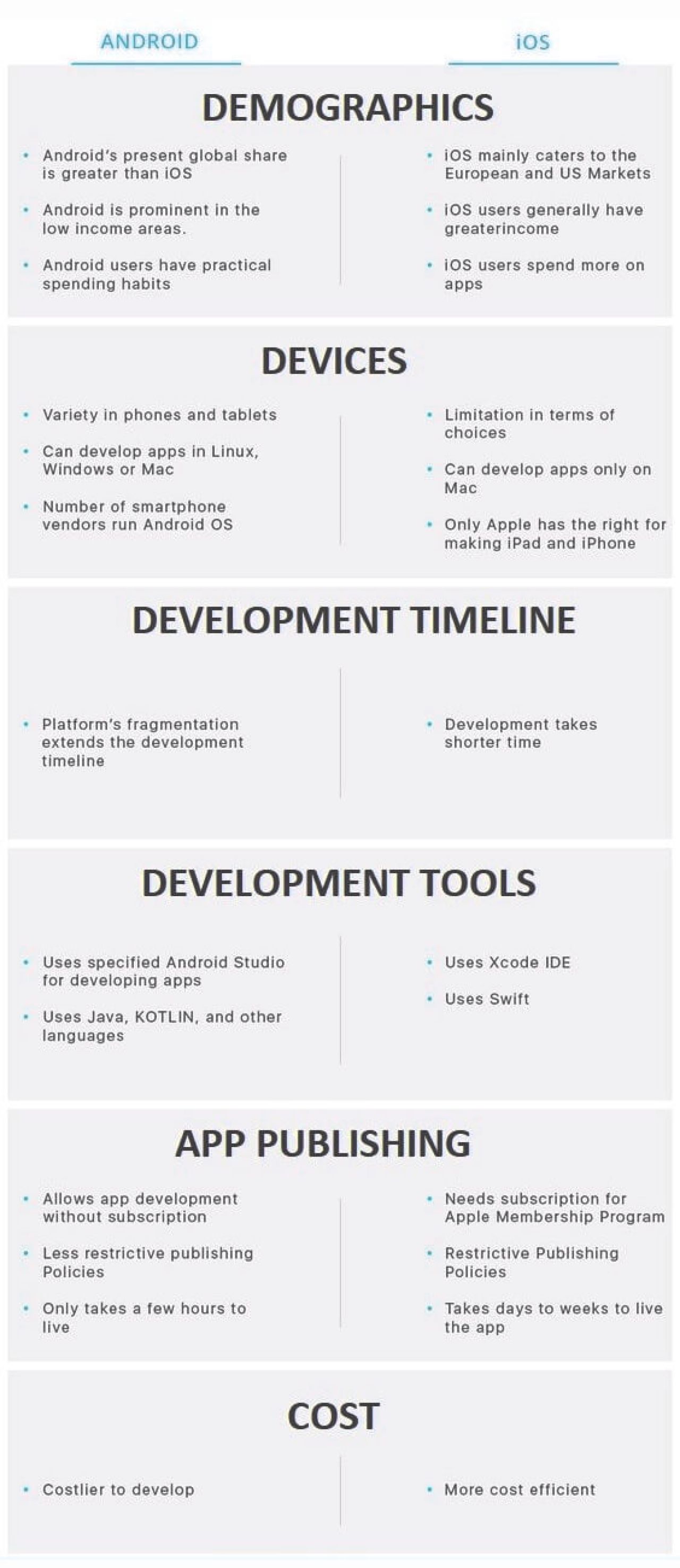
UX and UI design: Keep It Simple
UI and UX design affect the budget for building a software project. Custom solutions cost more; that’s why opting for some ready-made tech stacks is a good way to save your budget.
To reduce your mobile app development cost without losing quality, we recommend keeping your app as simple as possible. You should draw a clear line between which elements and processes are critical to your promotional strategy and which ones are not. For example, minimalistic apps like Tinder or Uber can also be in high demand if they offer revolutionary features.
Well, you’ll be lucky if the designers have already worked on similar apps and can offer you a template solution. The template will only need to be styled (i.e., colors, fonts, illustrations), or taken from your product guidelines. So the design will be ready in a short time, and you’ll save on the budget.
Save Money on Back-end Development for Mobile Apps
The back-end is one of the factors that affect the cost of a mobile application development process. To save money on back-end development, you can consider the following options:
- Client-side data storage. Client-side storage allows the app to save different types of data to the user’s local storage. Storing data consistently enables long-term storage, back-ups of saved data for offline use, and retaining user-specific settings for your app. For example, this option enables you to store user settings like name and preferred color scheme.
- Serverless app architecture. This means that support is provided entirely by the cloud service that you base your architecture on. Some of the most widely available services are AWS, Azure, and Firebase.
- Use of SaaS services. Some apps require standard features, such as payment, chats, or push notifications, which are difficult and costly to create and maintain. However, you shouldn’t create such functions from scratch. It’s more convenient and less expensive to use premade SaaS solutions that operate on a cloud and are supported by the service provider. They usually have great API and integration, as well as ready-to-use libraries for various operating systems and devices. All you have to do is hook everything up to your project. For example, in the case of using a payment feature, you should adopt a bank’s payment gateway.
Outsource First, Hire Later
Development outsourcing also allows you to cut down on office rental and equipment costs, minimize internal workflow, and choose employees from the global talent pool.
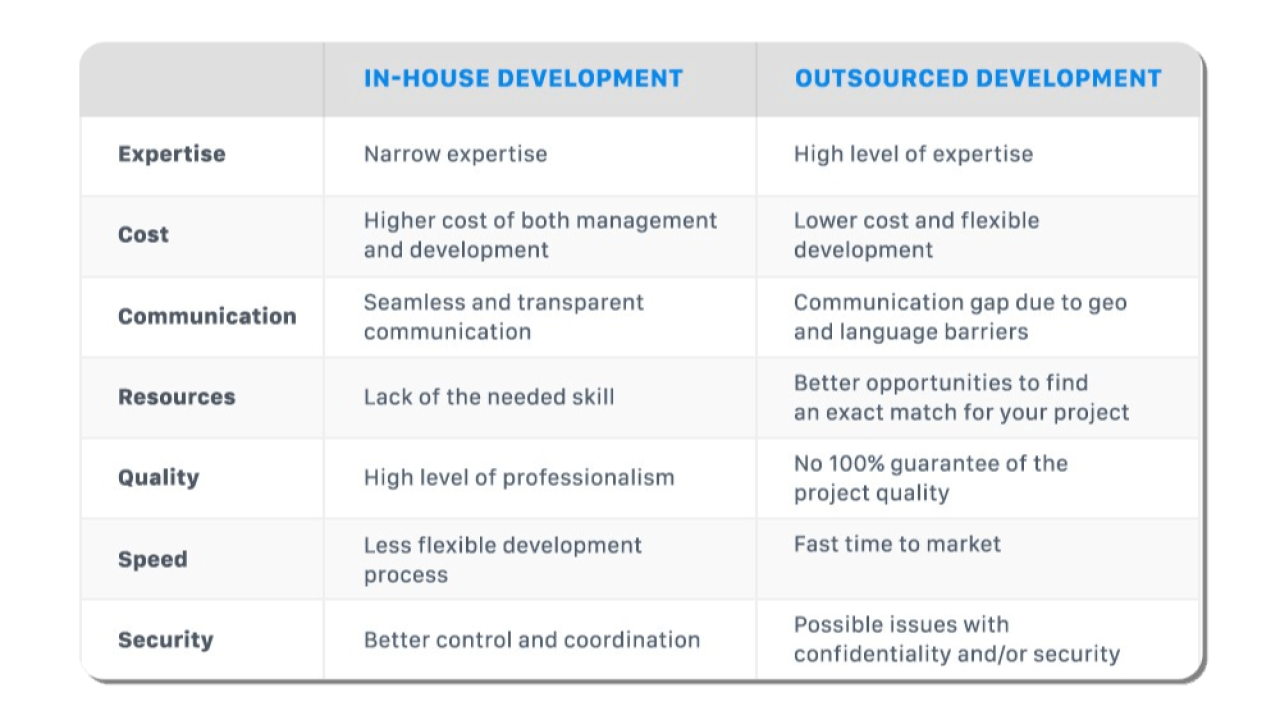
According to the research by Deloitte, there are a few reasons why companies outsource.
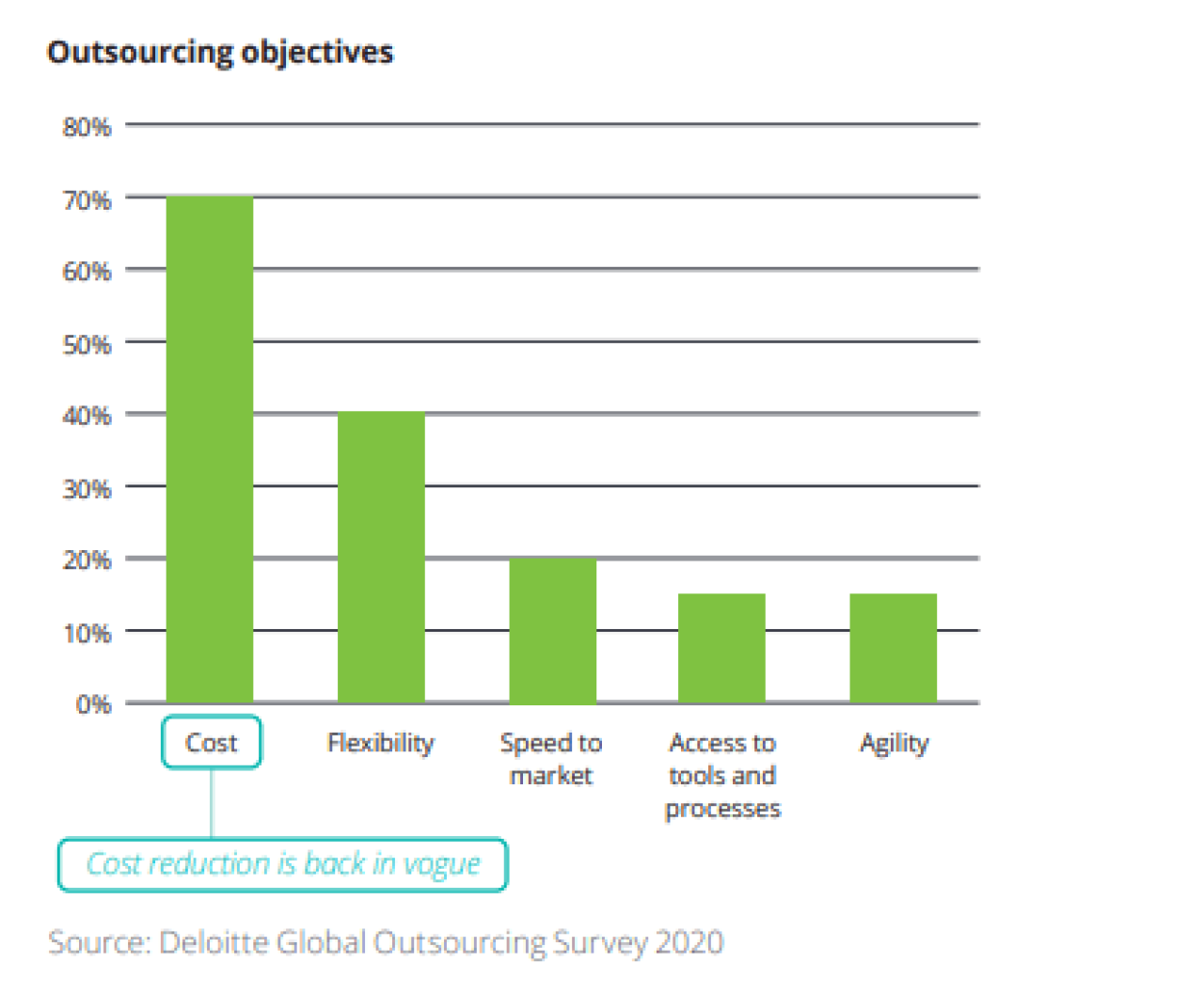
If you want to outsource, we recommend that you follow our detailed instructions — How to Outsource App Development.
Choose Your Cooperative Model Wisely
If you decide to outsource app developers, choosing from among fixed price or time and material payment models can be tricky. It is crucial to take a closer look at all the advantages and disadvantages of each model, and how they might suit your project.
Fixed-price model. The fixed-price payment model can be adopted when requirements, terms, and prices are highly predictable. A fixed-price agreement between a client and an outsourcing team declares that the client will pay a fixed price for the final result. At the pre-agreement stage, you should be able to share your vision with the developers to ensure the appropriate outcomes. An outsourcing vendor will provide you with budget estimates and possible timelines.
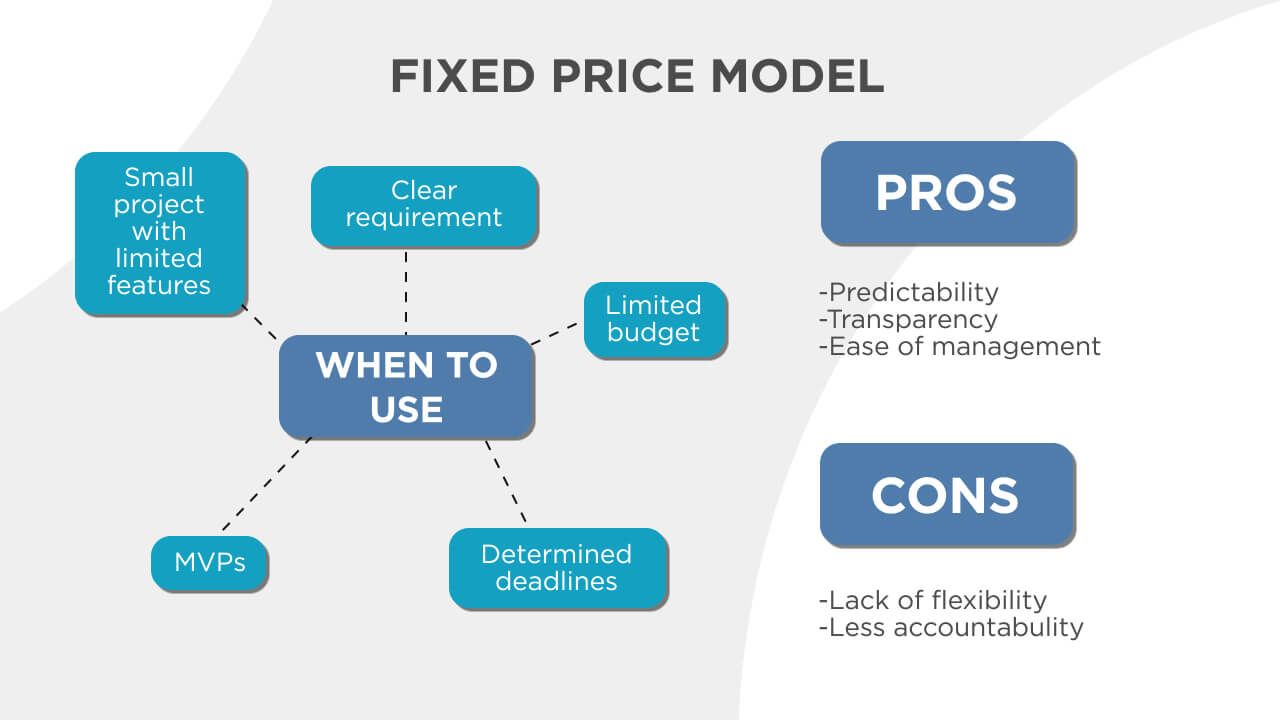
The advantage of this approach is that there is no risk of going over the budget, and the result can be evaluated easily. However, the fixed-price model doesn’t allow you to change your product idea or features on the go.
Time and materials pricing model. This model considers only the cost of resources: the contractor’s salary, cost of materials, and in some cases the average for the fixed charges. In this case, the value and scale of the project can be evaluated only as a draft. In a nutshell, you will pay for the time (in hours) spent on your project, plus the cost of materials.
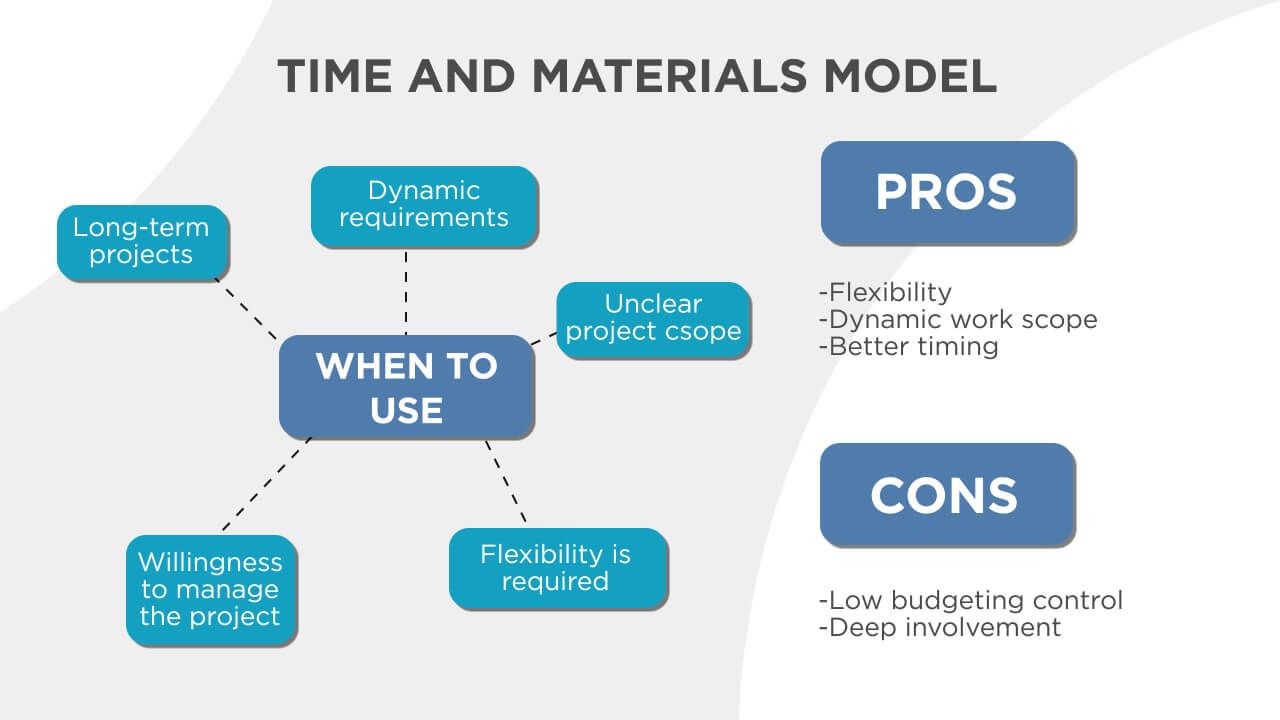
This model allows you to establish better project timing, make changes during the development process, and track the developer’s efficiency more easily. However, note that the time-and-materials model can lead to unforeseen costs and burn the budget quickly. You will also have less control.
Use Credible Technologies
A tech stack determines the development workflow, style, and complexity of app maintenance, as well as influencing the average cost of app development. In terms of cost, your concerns may be the licensing fees and ongoing payments for the software infrastructure you use. But there are also other factors influencing your project cost:
- Recruiting expenses. The more popular the technology, the more talent there is for you to choose from. For example, with 42% of mobile app developers using React Native and only 18% using Ionic, choosing the former for your tech stack promises a faster, smoother, and therefore better hiring process.
- Developer’s hourly rates. There are many factors, like location or cooperation model, that influence the app development cost. But it should be noted that the hourly rate is influenced not only by the developer’s country of residence, but also by their qualifications.
- Software maintenance expenditures. Programming languages and frameworks influence your software architecture, codebase size, and ease of maintenance. It’s best if you choose technologies that allow you to update, scale, and modify your software in a cost-efficient way.
We recommend you check what unicorns and your competitors adapt to build their software. Here are some tech stack examples of famous companies:
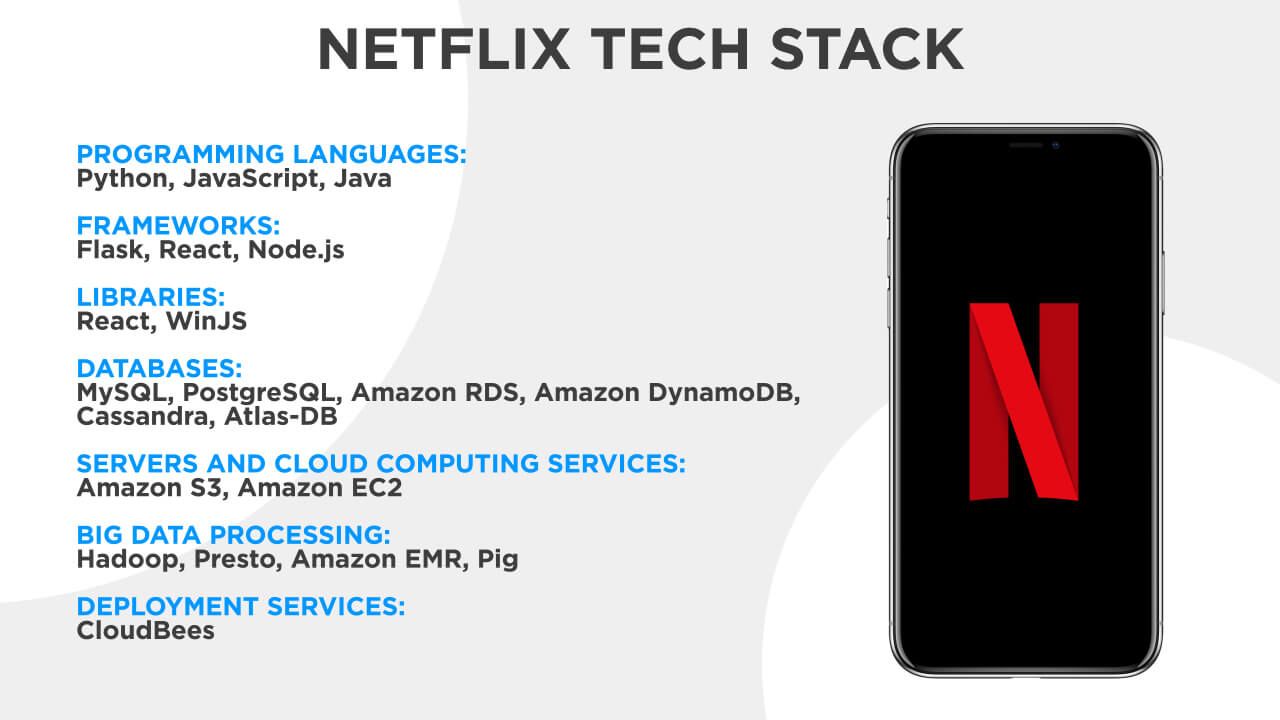
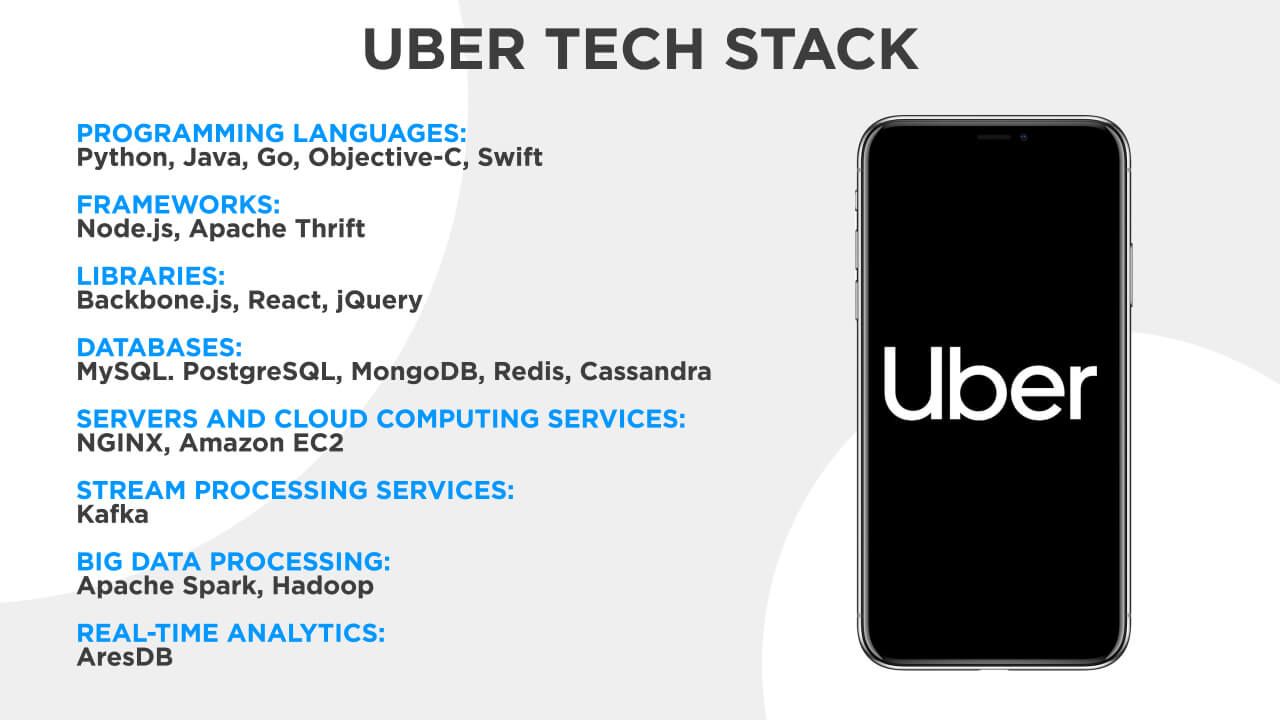
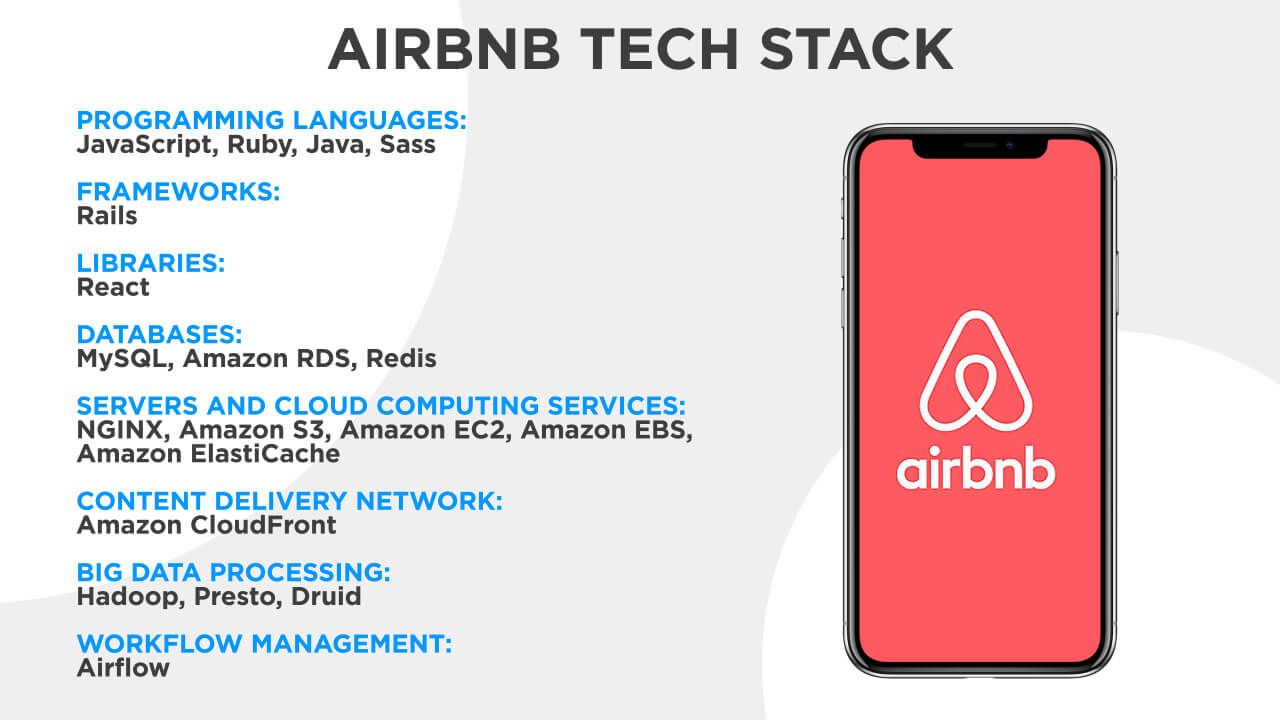
When choosing your app’s tech stack, don’t rely on competitors’ apps, previous projects, or personal preferences. Knowing what industry leaders choose to power their apps will help you see what technologies have built up more trust and support. However, you shouldn’t blindly copy other people’s technology decisions, because they could have been made before better solutions appeared.
Ongoing Testing
Improvements and fixes are one of the main requirements during the lifetime of an app. This is not only important during the development phase, but is also essential after the app launch. It would be ideal to have an expert who can suggest ideas for decreasing mobile app development costs throughout the process. Ongoing testing of mobile apps can improve all phases of publishing and reduce costs.
Running a Profitable Startup Requires a Committed Team
Every startup is unique. That is why you need a team that’s not only committed to building a functional and attractive product, but one that users need and will pay for.
You bring the startup idea, the VironIT team helps you build, launch and run your data-driven app. So you can focus on what you do best, while we focus on what we’ve proven to be great at.
Contact us for more insight into how we would approach building your startup app.

 (5 votes, average: 4.60 out of 5)
(5 votes, average: 4.60 out of 5)


